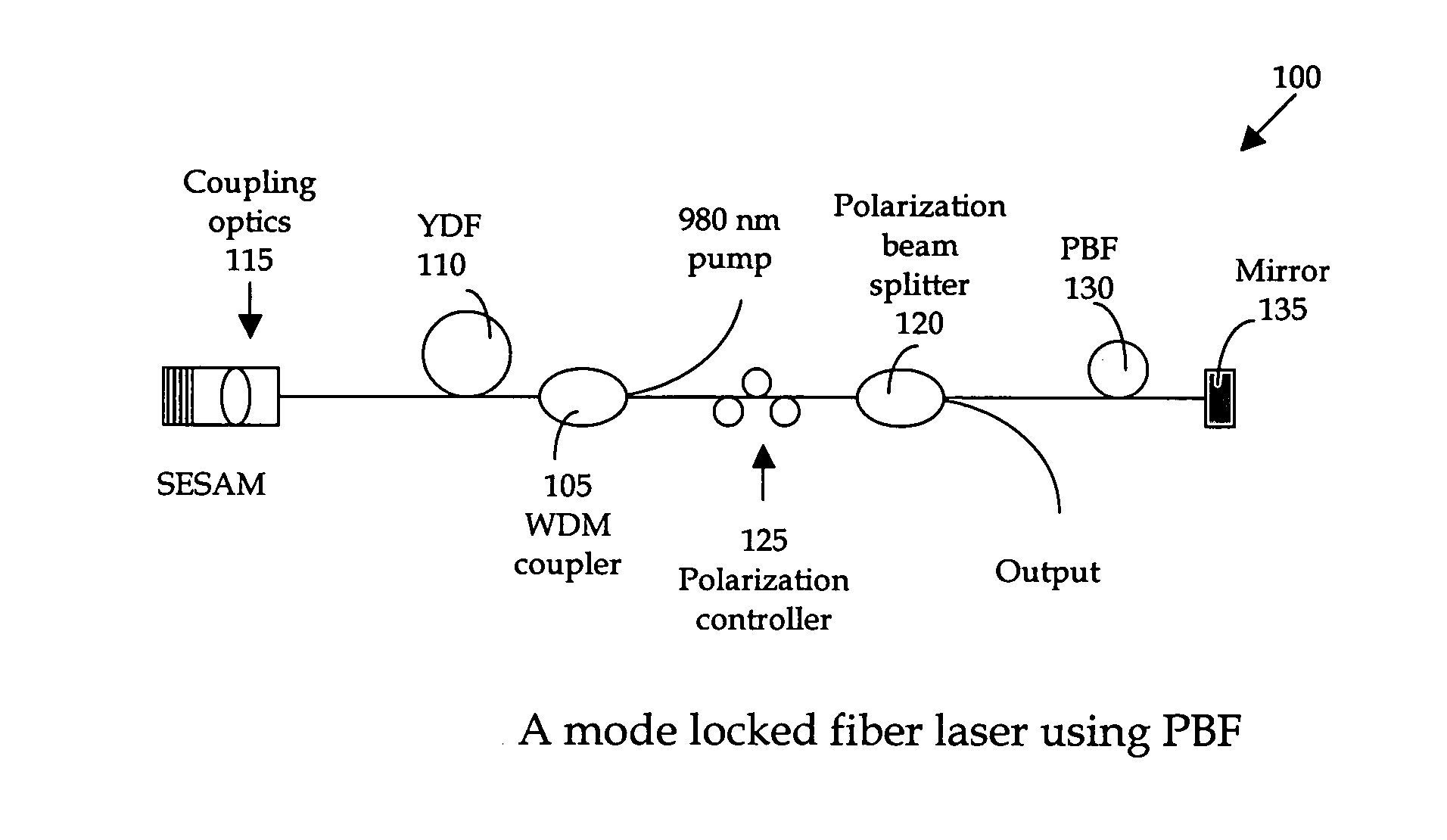Photonic band-gap fiber based mode locked fiber laser at one micron
a fiber laser and mode lock technology, applied in the direction of laser details, basic electric elements, electrical equipment, etc., can solve the problems of difficult alignment maintenance, bulky laser systems, and inability to generate negative dispersions of conventional silica fibers
- Summary
- Abstract
- Description
- Claims
- Application Information
AI Technical Summary
Benefits of technology
Problems solved by technology
Method used
Image
Examples
Embodiment Construction
[0021] Referring to FIG. 1 for a schematic diagram of a nonlinear polarization pulse-shaping mode locked fiber laser 100 of this invention. The fiber laser system includes wavelength division multiplexing (WMD) coupler 105 to receive a laser input from a 980 nm pump for combining with a one micron signal to project to a gain medium Ytterbium (Yb) doped fiber (YDF) 110. An amplified laser signal is transmitted to a semiconductor saturation absorber (SESAM) 115 and to a polarization beam splitter 120 via a polarization controller 125. The polarization controller 125 is placed in front of the polarization beam splitter 120 for adjusting of the output coupling-ratio. The fiber laser system further includes a photonic band-gap fiber (PBF) 130 that includes a mirror 135 placed on one end-face of the PBF 130 to reflect the signal back into the cavity. The photonic band-gap fiber (PBF) 130 is a newly available fiber which dispersion can be manipulated to negative dispersion. The function of...
PUM
 Login to View More
Login to View More Abstract
Description
Claims
Application Information
 Login to View More
Login to View More - R&D
- Intellectual Property
- Life Sciences
- Materials
- Tech Scout
- Unparalleled Data Quality
- Higher Quality Content
- 60% Fewer Hallucinations
Browse by: Latest US Patents, China's latest patents, Technical Efficacy Thesaurus, Application Domain, Technology Topic, Popular Technical Reports.
© 2025 PatSnap. All rights reserved.Legal|Privacy policy|Modern Slavery Act Transparency Statement|Sitemap|About US| Contact US: help@patsnap.com


